They talk about me or I talk to them...
 |
December 12, 2022 - Daily Science - L'EXTREMELY LARGE TELESCOPE EUROPÉEN DEVRAIT OUVRIR L’OEIL EN 2028 « Les plus hautes grues du Chili sont actuellement mobilisées pour la construction du plus grand télescope terrestre jamais conçu ». Voici quelques jours, à Bruxelles, le Dr Henri Boffin, astronome de l’ESO, l’Observatoire austral européen, commentait en ces termes les travaux en cours au sommet de la montagne Cerro Armazones, dans le désert d’Atacama, au Chili. Le site, situé à une vingtaine de kilomètres du "Very Large Telescope" européen (le VLT), abrite le chantier de l’ELT, l'"Extremely Large Telescope". Construit par l’ESO et ses états membres, le projet est pharaonique. Les astronomes du monde entier ont les yeux rivés sur ce futur télescope géant et son dôme, qui sera aussi haut que l’Atomium.A lire ici... |
 |
April 2, 2022 - Astrobites - The (new) April Fools Peer Review Process This paper addresses the uselessness of the h-index, a common metric for quantifying a researcher’s career as a single number, and suggests a replacement: the b-index (b is for better).Reviewer #1: You have not only contributed to the admirable passtime of ridiculing the h-index, but propose an improved metric to measure academic productivity which would be sufficiently complicated and arduous for academics to drive us to actually read CVs and not treat people as a single number. Hats off! Reviewer #2: A fine suggestion to improve hiring and grant allocation practices, though you should probably cite my papers… I mean, these papers… ahem. Read more here... |
 |
April 1, 2021 - S&T - Cakes, Cats, and Stars Another study analyzes the rejuvenation of a certain class of stars called blue stragglers. “The Secret of the Elixir of Youth of Blue Straggler Stars" by Henri Boffin (ESO) suggests that if we “manage to find out the secret of why some stars appear younger than they are, this could have many practical applications”. His analysis of “FARCE” telescope data yielded joyful results.Read more here... |
 |
March 23, 2021 - ESA - Is the nearest star cluster to the Sun being destroyed? Data from ESA’s Gaia star mapping satellite have revealed tantalising evidence that the nearest star cluster to the Sun is being disrupted by the gravitational influence of a massive but unseen structure in our galaxy. ESA Research Fellow Tereza Jerabkova and colleagues from ESA and the European Southern Observatory made the discovery while studying the way a nearby star cluster is merging into the general background of stars in our galaxy.Read the press release here... |
 |
June 1, 2020 - ESO - Hot stars are plagued by giant magnetic spots Beyond the variations in brightness due to spots, the team also discovered a couple of extreme horizontal branch stars that showed superflares — sudden explosions of energy and another signpost of the presence of a magnetic field. “They are similar to the flares we see on our own Sun, but ten million times more energetic,” says study co-author Henri Boffin, an astronomer at ESO's headquarters in Germany. “Such behaviour was certainly not expected and highlights the importance of magnetic fields in explaining the properties of these stars.”Read more here... |
 |
November 15, 2018 - Nature - Photobombing stars lead to cosmic false identity Henri Boffin at the European Southern Observatory in Garching, Germany, and his colleagues trained a telescope on a bipolar planetary nebula roughly 4,000 parsecs from Earth. Initial observations of the nebula’s centre revealed a binary system — the potential parent system of the nebula and so a tantalizing target for study.Read more here... |
 |
October 22, 2018 - IAC and RAS - Ultra-close stars discovered inside a planetary nebula "When we began the observations, it was immediately clear that the system was a binary" explains Henri Boffin, researcher at the European Southern Observatory in Germany. "We saw that the apparently single star at the centre of the nebula was rapidly changing in brightness, and we knew that this must be due to the presence of a companion star."Read more here... and here... |
 |
July 27, 2017 - ESO - A Tale of Three Cities Using new observations from ESO's VLT Survey Telescope, astronomers have discovered three different populations of young stars within the Orion Nebula Cluster. This unexpected discovery adds very valuable new insights for the understanding of how such clusters form. It suggests that star formation might proceed in bursts, where each burst occurs on a much faster time-scale than previously thought.Read more... |
 |
August 24, 2016 - Washington Post - Scientists say they’ve found a planet orbiting Proxima Centauri, our closest neighbor ESO astronomer Henri Boffin, who previously worked as HARPS's instrument scientist but wasn't involved in the new research, told The Post that Proxima b's signal looked to be about three times as strong as that of Alpha Centauri Bb, the "planet" that turned out to be nothing but noise.Read more... |
 |
April 21, 2016 - Svarta Hal - Bildningsbyran - rymden Discussing about black holes, and the discovery of the black hole at the centre of our Milky WayRead more... |
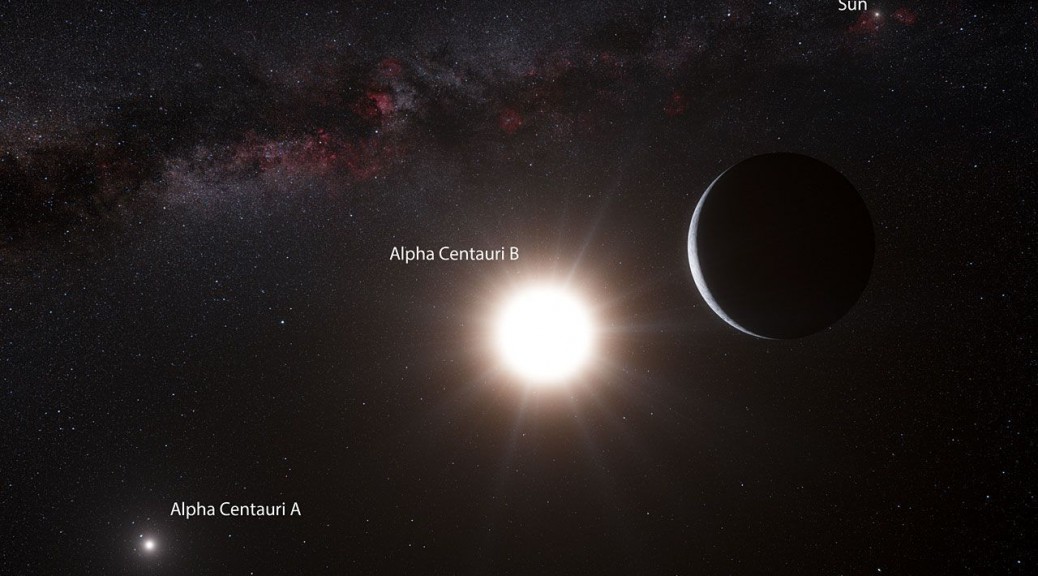 |
January 23, 2016 - Futura Science - Le nouveau visage du système stellaire Alpha Centauri En compilant une énorme quantité d’observations, deux astronomes belges viennent de dépoussiérer le portrait du système stellaire Alpha Centauri.Read more... |
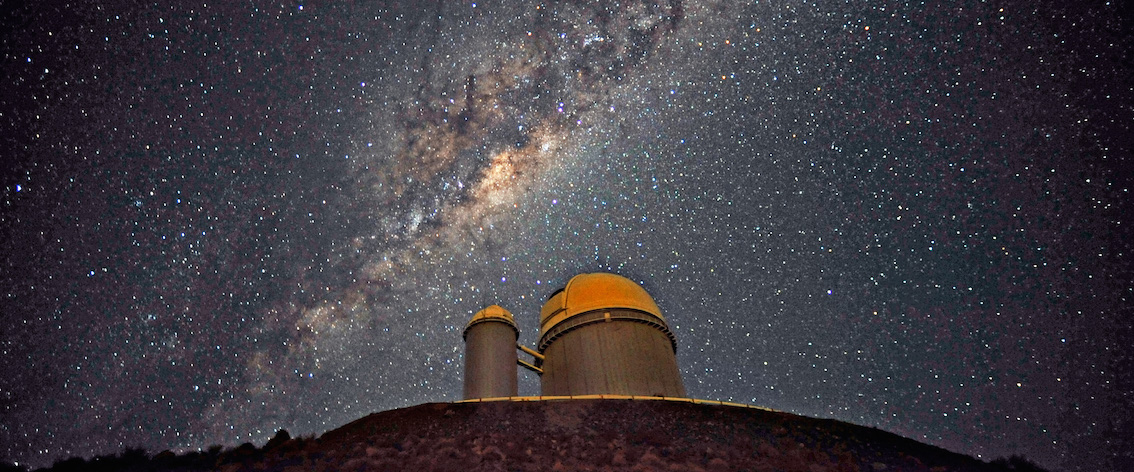 |
January 12, 2016 - Daily Science - Alpha du Centaure remis à sa place par deux astronomes belges « Il y a actuellement un débat concernant la présence ou non d’une planète autour de la plus petite des deux étoiles d’alpha Centauri », explique Henri Boffin, « Ce débat ne pourra être tranché que si nous connaissons l’orbite très précise des deux étoiles. Ce que nos travaux viennent d’obtenir ».Read more... |
 |
July 9, 2015 - Lexus Magazine - Into the dark Is there anybody out there? It's a question we've all probably asked ourselves at some point as we stared up at the stars twinkling in the night sky. For years we humans have pondered our place in the universe, wondering if we're alone or whether life exists on other planets.Read more... |
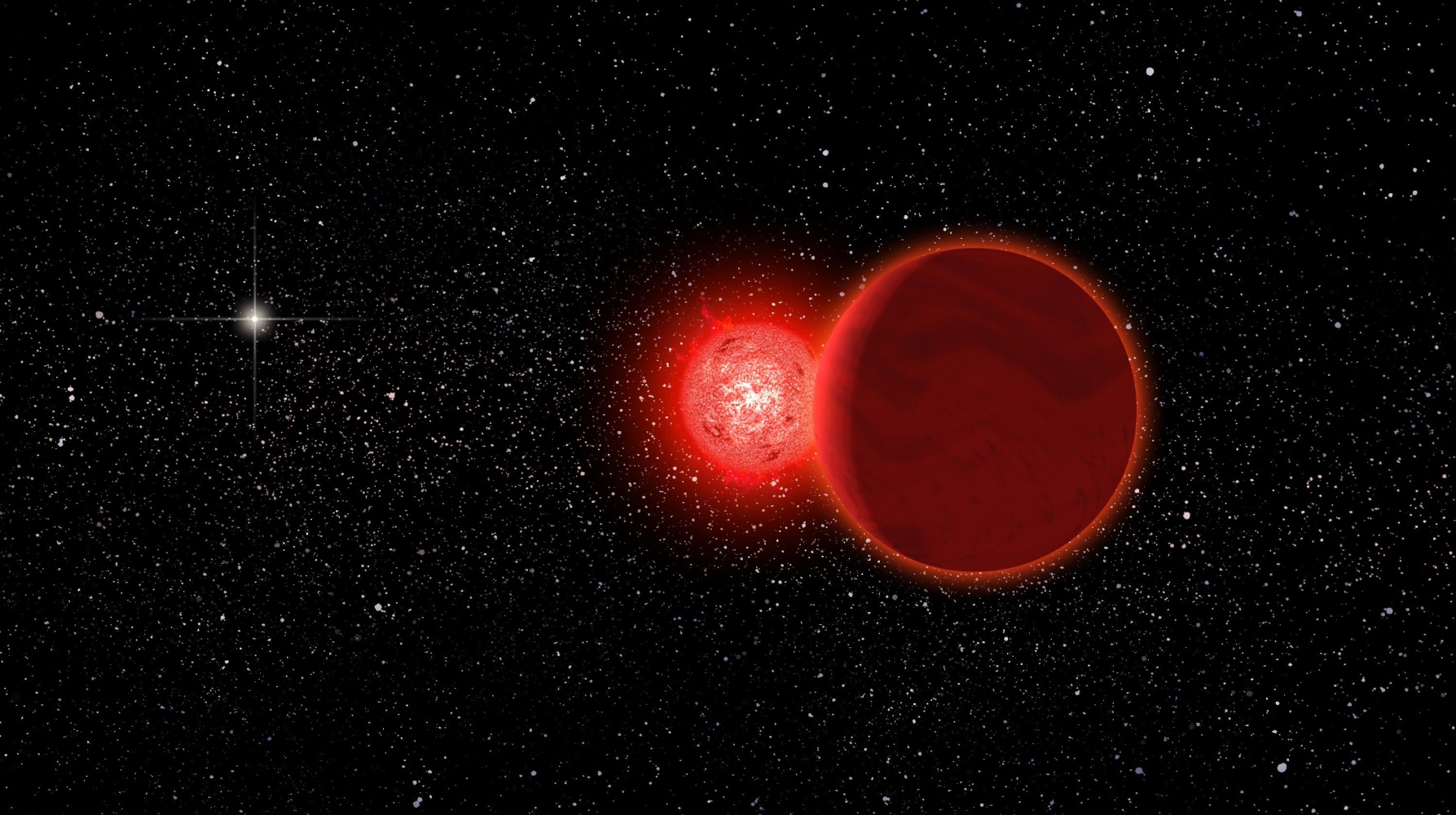 |
February 18, 2015 - NBC News - Alien Star Missed Us by Less Than a Light-Year, Scientists Say Astronomers say a red dwarf star and its brown dwarf companion passed within a light-year of our own sun 70,000 years ago, moving through the comets in the outer reaches of the Oort Cloud that surrounds our solar system.Read more... |
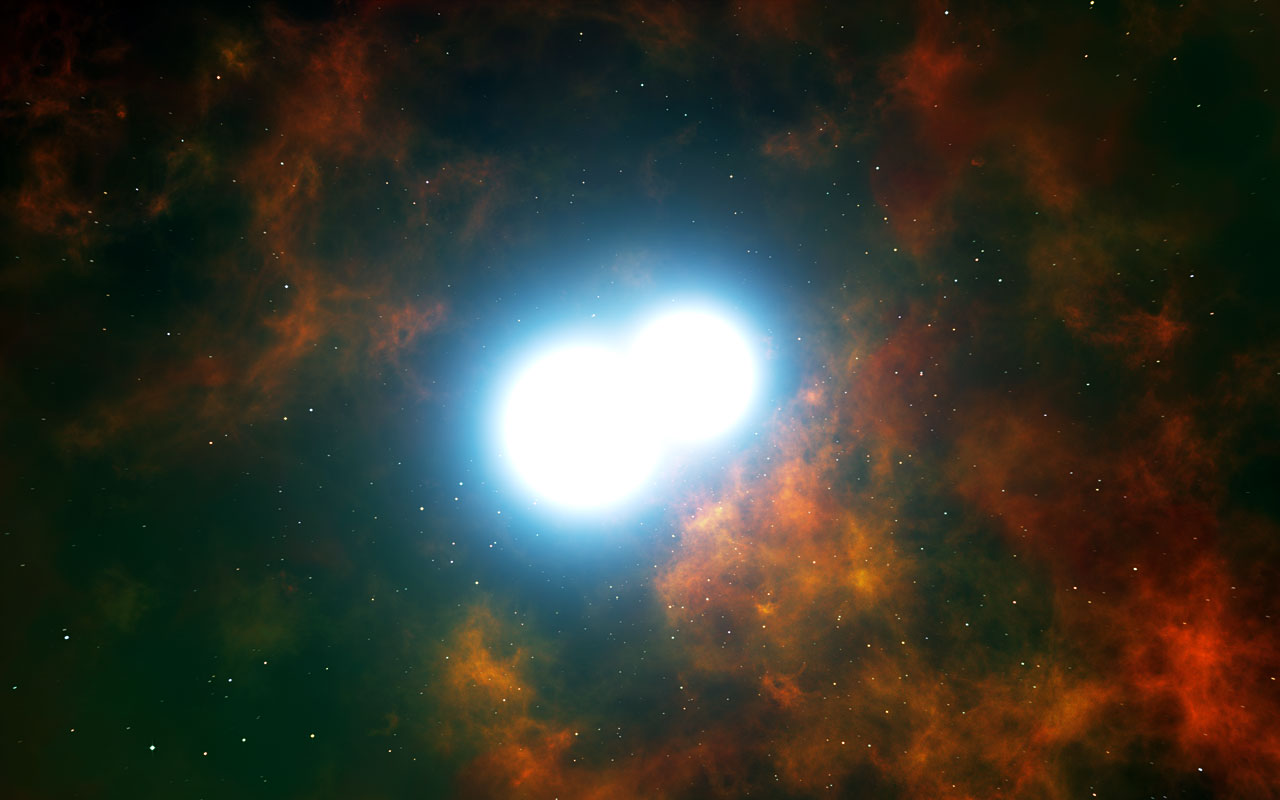 |
February 10, 2015 - The West Side Story - Collision of white dwarf stars located inside a nebula likely to produce supernova eruption Dr. Henri Boffin of the ESO explained that when we looked at this object’s central star, we found not just one but a pair of dwarfs at the core of this glowing, strangely lopsided cloud.Read more... |
 |
February 9, 2015 - The Register - Boffin the boffin and his boffinry pals in double dwarf super-prang alert Supernova, huge bang, yes, yes. But have we reached Peak Boffin?Read more... |
 |
February 9, 2015 - ESO - Stellar Partnership Doomed to End in Catastrophe Astronomers using ESO facilities in combination with telescopes in the Canary Islands have identified two surprisingly massive stars at the heart of the planetary nebula Henize 2-428. As they orbit each other the two stars are expected to slowly get closer and closer, and when they merge, about 700 million years from now, they will contain enough material to ignite a vast supernova explosion. The results will appear online in the journal Nature on 9 February 2015.Read more... |
 |
January 28, 2015 - SEN - Giant telescope images God's Hand reaching into space "How and why they are this shape is relatively well known," Dr Boffin told Sen. "However, what it is crucial is to understand how such clouds give rise to baby stars - this is still a mystery of Nature. And in order to study such dark clouds, opaque to visible light, one needs to go to greater wavelengths. In particular, with ALMA, it is possible to probe the inside of the cloud, in effect doing a sonogram, as we do to see babies in their womb."Read more... |
 |
November 16, 2014 - Tecnociencia - El Telescopio más grande del mundo Científicos chilenos están desarrollando cremas de protección solar con bacterias del desierto. Y en Cerro Paranal se construye el telescopio óptico-infrarrojo más grande del mundo.Ver mas... |
 |
Août 4, 2014 - Daily Science - AU CHILI, HENRI BOFFIN PILOTE LE VERY LARGE TELESCOPE EUROPEEN Ils sont Belges, scientifiques et ils exercent leurs talents loin de nos frontieres. Toute cette semaine, Daily Science propose à ses lecteurs d'aller à la rencontre de ces chercheurs belges qui ont choisi l'expatriation pour faire carrière. Leurs profils et leurs motivations sont parfois très différents.Nous commençons notre tour du monde avec l'astrophysicien Henri Boffin. Comme une petite dizaine d'autres Belges, il travaille à l'ESO, l'Organisation Européenne d'Astronomie, une organisation intergouvernementale qui emploie quelque 700 personnes. Lire plus... |
 |
Avril 15, 2014 - Observatoire de Paris - La phase de production du lithium dans les étoiles enfin identifiée Utilisant le VLT de l'ESO, des astronomes européens ont découvert une étoile super-riche en lithium dans un amas d'étoiles. Cette première leur permet de démontrer dans quelle phase de l'évolution d'une étoile celle-ci produit le lithium, apportant ainsi une information capitale à un mystère de longue date.Lire plus... |
 (c) ESO |
Avril 10, 2014 - Science & Vie - LA NÉBULEUSE ABELL 33 PHOTOGRAPHIÉE AVEC LE VERY LARGE TELESCOPE L’ESO a donc décidé, sous la houlette des astronomes Olivier Hainaut, Henri Boffin et Richard Hook, d’utiliser les télescopes des observatoires de Cerro Paranal et de La Silla « en astronome amateur » lorsque la qualité du ciel est trop dégradée pour les recherches scientifiques. Dans une région du monde où le ciel est clair plus de 300 nuits par an, cela n’est pas fréquent, mais c’est toutefois suffisant pour obtenir des images aussi belles que celle-ci.Lire plus... |
 (c) Sky & Telescope |
April 1st, 2014 - Sky & Telescope - Fooling with the Universe Using the UNnecessary WIde SurvEy nanosatellite, astronomers have discovered a nearby brown dwarf —
an object that isn’t massive enough to kick off nuclear fusion in its core.
“To avoid having to use an unfortunate acronym coupled to an unpronounceable phone number name,” write author Henri Boffin
(Extraterrestrial Institute for the Advancement of Earth) and colleagues, “. . . we will call this object the Death Star.”
|
 (c) Woodtv.com |
March 11th, 2014 - 8 Wood TV - Studying the sky in Chile The word meteorology means the study of the sky. Normally,
meteorologists are studying what’s in the world’s atmosphere, but that curiosity can go beyond the clouds.
Storm Team 8 meteorologist Kyle Underwood made a journey to one of the largest telescopes on earth,
the Very Large Telescope, or VLT, in Chile.
|
 (c) The Register |
February 10th 2014 - The Register - El Reg talks beer and binaries with a boffin named Boffin We at El Reg like a good boffin, so we're delighted to bring fellow boffophiles a quick interview with Henri Boffin, who's staff astronomer at the European Southern Observatory (ESO) facility in Paranal, Chile.
|
 (c) Janella Williams |
December 27th 2013 - "L'Express" - Deux étoiles découvertes aux "portes" de la Terre Henri Boffin de l'Observatoire européen austral a dirigé une équipe d'astronomes pour en savoir plus sur notre proche voisin. A l'aide de mesures astrométriques rassemblées entre avril et juin 2013, les chercheurs ont pu établir la position des deux objets. "Nous avons été capables de mesurer la position des deux objets avec une précision de quelques milliarcsecondes*" annonce-t-il dans un communiqué. "C'est comme si une personne à Paris était capable de déterminer la position de quelqu'un à New York avec une marge d'erreur de 10 centimètres".
|
 (c) Getty Images |
December 17th 2013 - "Time Magazine" - Very Sad Planet Orbits Very Sad Star Writing in the journal Astronomy and Astrophysics, an international team reports the tentative discovery of a brown-dwarf planet just 6.6 light years away—not merely right next door in cosmic terms, but practically in the next room. “If confirmed,” says lead author Henri Boffin, of the European Southern Observatory (ESO), “it would be one of the closest planets to Earth, except for the planet around Alpha Centauri B [4.3 light-years away].” That, he says, “would allow for exquisite follow-up with next generation instruments.”
|
 (c) NASA |
December 16th 2013 - "Astronomy Magazine" - Nearby failed stars may harbor planet After two-months of observations and extensive data analysis, Beletsky’s team, led by Henri Boffin of the European Southern Observatory (ESO), found that both objects have a mass between 30 and 50 Jupiter masses. By comparison, the Sun has a mass of about 1,000 Jupiter masses.
|

|
November 2012 - "Le Soir" - Henri et les papillons cosmiques Un astronome belge perce le mystère des nébuleuses planétaires et leurs éjections de matière.
|

|
November 2012 - ESO 1244 - Cosmic Sprinklers Explained Planetary nebulae are glowing shells of gas around white dwarfs — Sun-like stars in the final stages of their lives. Fleming 1 is a beautiful example that has strikingly symmetric jets that weave into knotty, curved patterns. It is located in the southern constellation of Centaurus (The Centaur) and was discovered just over a century ago by Williamina Fleming, a former maid who was hired by Harvard College Observatory after showing an aptitude for astronomy. Astronomers have long debated how these symmetric jets could be created, but no consensus has been reached. Now, a research team led by Henri Boffin (ESO, Chile) has combined new Very Large Telescope (VLT) observations of Fleming 1 with existing computer modelling to explain in detail for the first time how these bizarre shapes came about. Read more in ESO 1244. |
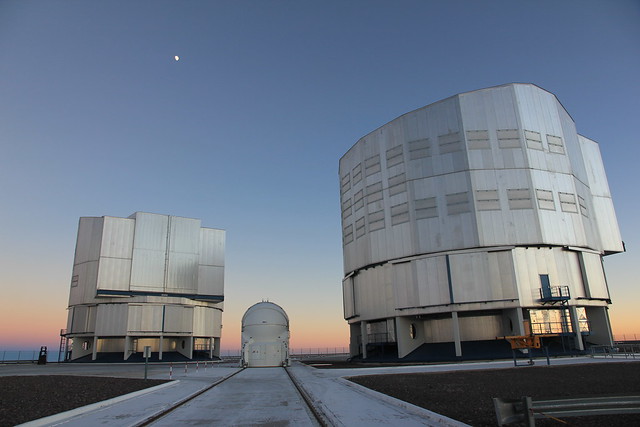
|
October 2012 - parmilesetoiles.fr La salle de controle est immense, une section par telescope. Nous discutons longuement avec Henri Boffin, qui fait notamment des recherches sur les nebuleuses planetaires issues -ou supposees issues- d'etoiles doubles. Il travaille sur UT1, alias Antu, le Soleil- c'est le telescope que nous utiliserons le lendemain pour faire l'observation de la nebuleuse du casque de Thor. L'Homme est passionnant, et je vous invite a lire les articles qui lui sont consacres sur la toile, ou meme a le regarder en video sur le site de l'ESO ! |

|
Live VLT Observations of Thor's Helmet Nebula On 5 October 2012, the European Southern Observatory (ESO) will broadcast A Day in the Life of ESO, a free, live event on the web, as part of its 50th Anniversary celebrations. There will be live observations from ESO's flagship observatory, the Very Large Telescope (VLT), on Cerro Paranal in Chile's Atacama Desert, as well as fascinating talks from astronomers at ESO's Headquarters in Germany. Members of the public are invited to ask questions in advance of the event, or during the stream, by Facebook, Twitter, and email. A timetable for the webcast is available below and online.
|

|
October 2012 - "Le Soir" - Une nuit dans la vie d'un astronome Les cinquante ans de l'Observatoire austral européeen (ESO) offrent a tous de multiples rendez-vous. En voici un de plus, avec le Belge Henri Boffin. L'occasion de plonger dans le quotidien d'un astronome.
|

|
October 2012 - Décloitrés #9 - Les pieds dans le sable, la tête dans les étoiles Henri Boffin, astronome belge, appartient à la communauté internationale des scientifiques de l'ESO, l'Observatoire Européen Austral. Interview on pp 20-21. |

|
July 2011 - BBC - Why Chile is an astronomer's paradise With its crystal clear skies and bone dry air, the Atacama Desert in northern Chile has long drawn astronomers. Some of the most powerful telescopes in the world are housed here.
Henri Boffin, a senior astronomer at Paranal, says the new telescope should help scientists address questions raised by the existing instruments at the observatory.
|

|
December 2011 - Science & Vie - Dans l'intimité d'un couple d'étoiles L'équipe de Nicolas Blind et Henri Boffin a observé un couple d'etoiles en interaction avec un nouvel équipement du réseau Very Large Telescope Interferometer (VLTI) installé a l'observatoire de Cerro Paranal, au Chili.
|

|
December 2011 - ESO - Vampire Star Reveals its Secrets Astronomers have obtained the best images ever of a star that has lost most of its material to a vampire companion. By combining the light captured by four telescopes at ESO’s Paranal Observatory they created a virtual telescope 130 metres across with vision 50 times sharper than the NASA/ESA Hubble Space Telescope. Surprisingly, the new results show that the transfer of mass from one star to the other in this double system is gentler than expected. Read more in ESO 1148. |

|
March 2011 - ESOcast 27 - An ESO Astronomer at Work Life as an ESO astronomer is demanding, but working on one of the world's most powerful telescopes is also immensely rewarding. In this episode of the ESOcast, come with us as we follow ESO astronomer Henri Boffin through his day-to-day life. |
|
|
Astronomy and the media: a love story? At the International Astronomical Union Symposium : The Role of Astronomy in Society and Culture in 2009, Henri gave a speech entitled "Astronomy and the media: a love story? "
Le Temps - La course aux télescopes géants "L'objectif est de présenter un concept de référence au conseil de l'ESO; il devrait se prononcer à se sujet en janvier 2007, avant que commence le design final de l'objet", indique Henri Boffin, porte-parole de l'ESO.
|